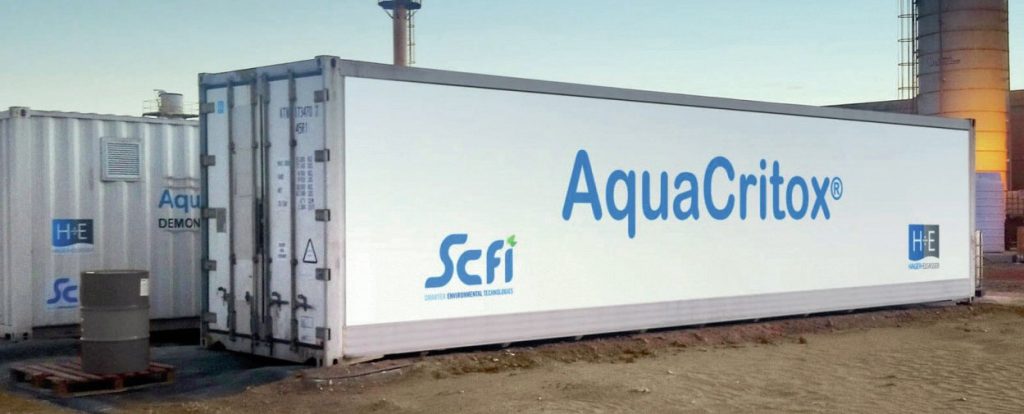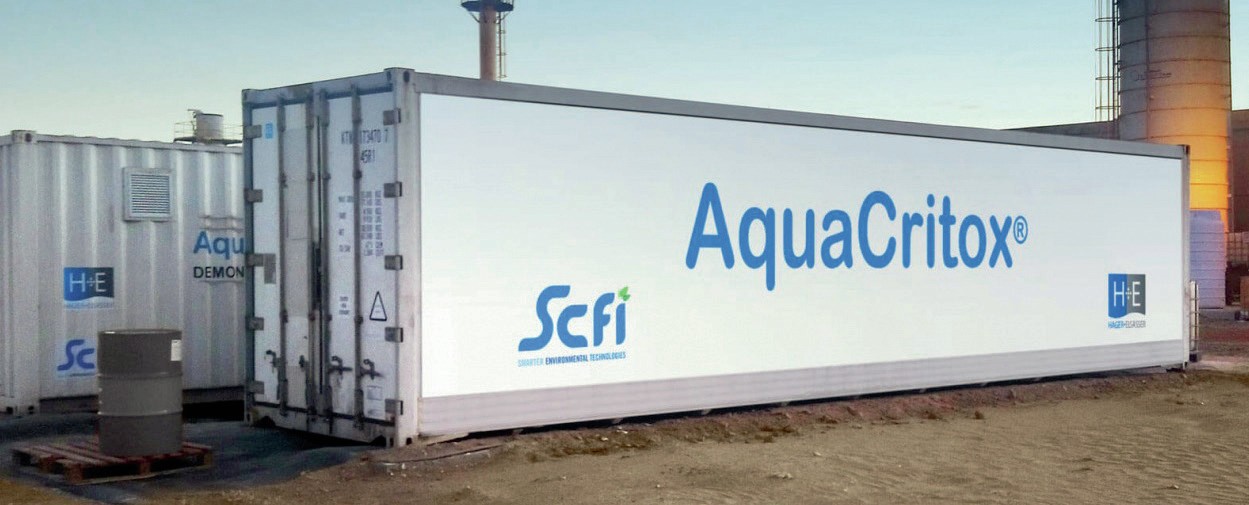Sulphur 392 Jan-Feb 2021

31 January 2021
Sulphur Industry News Roundup
EGYPT
Work begins on hydrocracking complex
Construction work has begun on a new hydrocracking complex for the Assiut refinery in Egypt, in the central Nile valley, according to TechnipFMC plc, who won the $1 billion engineering, procurement, and construction (EPC) contract for the project. The contract involves construction of new processing units including a vacuum distillation unit, a diesel hydrocracking unit, a delayed coker unit, a distillate hydrotreating unit and a hydrogen production unit which will use TechnipFMC’s proprietary steam reforming technology.
The project, which forms part of the Egyptian government’s energy transition strategy, also involves the construction of a sulphur recovery unit (SRU) and sulphur solidification unit as well as on-site and off-site storage areas and interconnecting utilities. Upon completion, the complex will process about 2.5 million t/a of heavy fuel oil from ASORC’s nearby 4.5 million t/a (90,000 bbl/d) Assiut refinery to produce approximately 2.8 million t/a of Euro 5 quality diesel and other high-value products including 360,000-400,000 t/a of naphtha, 91,000-101,000 t/a of LPG, and 331,000 t/a of coke. Sulphur recovery will run to between 57,000-66,400 t/a. n
Start-up for ERC hydrotreating units
Axens reports that all of its units that form part of the Egyptian Refining Company (ERC) refinery project are now successfully operating and have reached full production and performance. The $4.3 billion refinery, at Mostorod north of Cairo, began operations last year, and produces Euro 5 refined products, including diesel and jet fuel, for the Egyptian domestic market by processing 4.7 million t/a of mainly atmospheric residue from the Cairo Oil Refinery Company. Axens was involved in providing licensing, the process design package, catalysts, proprietary equipment and services for several units, including a naphtha hydrotreating unit, a CCR-reforming unit, a diesel hydrotreating unit, and a single stage hydrocracking unit with recycle achieving high conversion.
“Axens is very proud of the trust expressed by ERC following the provision of Axens’ support to operate our technologies in the most efficient way. They demonstrated their confidence in Axens by securing the implementation of Connect’In® digital services which proactively enables the monitoring of Axens units performances,” said Patrick Sarrazin, Axens’ Process Licensing Global Business Unit executive vice-president.
ERC converts low value fuel oil into middle and light distillates and recovers 96,000 t/a of sulphur.
BELGIUM
Start up for refinery SRU
Frames says that it has supplied, and successfully commissioned, a hydrogen sulphide removal unit, based on the company’s proprietary LAMINOL technology, to a refinery in Antwerp, Belgium. Frames says that, in order to comply with the refinery’s stringent flue gas SOX emission limits, various technologies were evaluated during the conceptual design phase, including flue gas treatment and caustic scrubbers. However, LAMINOL technology was selected as most effective, while meeting the refinery’s total cost of ownership requirements. Working to a fast track schedule, the modular H2 S removal system was quickly installed and commissioned.
Instead of treating the flue gas directly, LAMINOL removes sulphur components from the distillation overhead gas containing up to 60% H2 S before it is combusted in the process furnace. Treating the waste gas in a stand-alone modularised unit meant that the unit was much easier to integrate into the existing refinery facility. The gaseous sulphur removed is converted into elementary sulphur in solid form. It is the result of an inhouse research and development program initially applied in the biogas market, where it provides a cost-effective alternative to conventional biogas sweetening processes. It is capable of selectively removing H2 S from CO2 rich gas streams to a few ppm even at near atmospheric gas pressure.
UNITED STATES
Honeywell completes acquisition of Ortloff
Honeywell has completed its acquisition of Ortloff Engineers, a licensor and developer of natural gas processing and sulphur recovery technologies, for an undisclosed sum. Ortloff will become part of Honeywell UOP’s Gas Processing and Hydrogen business, bringing expertise in the recovery of high-value natural gas liquids from natural gas streams. Ortloff also has several unique technologies for removing sulphur from refinery feedstocks and experience in sour gas process design. The two companies have worked closely together since 2002.
“Ortloff complements our existing offerings perfectly, enabling Honeywell UOP to better meet customer needs for high-recovery NGL extraction plants globally,” said Rachelle Goebel, vice president and general manager of Honeywell UOP’s Gas Processing and Hydrogen business. “Our joint technology offerings are installed in more than 50 gas plants around the world, allowing our customers to capture the greatest value from their natural gas resources.”
Deer Park to idle one SRU in 2021
Royal Dutch Shell Plc says that it plans to idle a sulphur recovery unit at the joint venture Deer Park, Texas, refinery in 2021, according to a company spokesman. The refinery has been operating at about 75% of its nameplate 318,000 bbl/d capacity because of reduced demand due to the covid pandemic. There are six SRUs at the site, one of which will be idled this year.
GERMANY
H+E develops new caustic purification technology
H+E Group, a supplier of industrial process water and wastewater treatment solutions, says that it has developed and successfully installed AquaCritox® , a new technology for the treatment of spent caustic in refineries in conjunction with Super Critical Fluids International (SCFI) Ltd. The caustic is generally highly contaminated with organic loads and usually contains sulphides, mercaptans and phenols. Previously, the company says, purification was difficult or simply not possible. AquaCritox is a high pressure, high temperature hydrothermal oxidation technology originally designed to operate at supercritical water conditions (i.e. above 221 bar and 374°C). The design employs a multistage tubular reactor and a novel pressure control system. In order to overcome issues with high salt content associated with spent caustic the original concept technology was adapted to operate at near critical conditions but below the critical point. It has now been installed and is operating at two sites in the Middle East. Subsequent laboratory results from onsite sampling confirms that efficient destruction of COD, sulphides and mercaptans is achieved. The treated spent caustic is therefore suitable for disposal or further treatment in a biological system.

IRAN
Inauguration of new sulphur recovery project
Iranian president Hassan Rouhani has officially inaugurated the new olefin and sulphur recovery units at the Ilam Petrochemical Plant. Along with other projects also inaugurated in December, these will bring total Iranian petrochemical capacity from 66 million t/a to 77 million t/a, and further projects due for completion by the end of the Iranian year in March are expected to take this to 90 million t/a.
At Ilam, the e56 million SRU will sweeten olefins. It will be fed by 349,000 t/a of C3+ fractions and 416,000 t/a of C5+ fraction, and will produced 331,000 t/a of desulphurised C3+ and 401,000 t/a of desulphurised C5+ fractions for production of ethylene, propylene, pyrolysis gasoline and liquid fuels. The unit, licensed by Axens, was built by Iran’s Energy Industries Engineering and Design (EIED), with a 72% domestic share of the project, including engineering, construction, installation and manufacturing of equipment.
Among the other projects inaugurated was a potassium sulphate plant at the Urmia Petrochemical complex. The unit will produce 40,000 t/a of potassium sulphate, and 50,000 t/a of hydrochloric acid, and will consume 34,000 t/a of potassium chloride and 22,800 t/a of sulphuric acid. The plant has been licensed by China’s CNBM and has designed and built by the Pars Qeshm Arseh Afroozan Engineering Company.
UNITED ARAB EMIRATES
Fujairah refinery to start up this year
Brooge Energy says that Fujairah’s fourth refinery should come on-stream in 2021. The 25,000 bbl/d refinery will begin producing low sulphur fuel oil in the second half of the year. The port’s third refinery started up in April 2020, a 15,000 bbl/d plant owned by Ecomar Energy Solutions, since expanded to 20,000 b/d.
KAZAKHSTAN
KPO partners settle oil and gas dispute with Kazakhstan
The Karachaganak Petroleum Operating (KPO) consortium, which operates one of Kazakhstan’s largest oil and gas fields, has paid $1.3 billion to settle a long running dispute with the Kazakh government over profit-sharing. The agreement paves the way for the project’s investors to move ahead with a $1.1 billion debottlenecking project which will boost sour gas production by 4 bcm per year. The Kazakh Energy Ministry announced on December 14th that in addition to the cash settlement, KPO had agreed to adjust the production-sharing agreement (PSA) for the Karachaganak field. This will earn the Kazakh state an extra $600 million in oil and gas sales by 2037, assuming a $40-50/bbl crude price.
Karachaganak is jointly operated by Royal Dutch Shell and Italy’s Eni, each with 29.25% of shares, as well as Chevron, Lukoil and state oil company KazMunaiGas (KMG). The field produced 412,000 barrels of oil equivalent per day of oil and gas in the first half of 2020, putting it in third place behind Tengiz and Kashagan in terms of Kazakhstan’s biggest oil and gas projects.
The current dispute dates back to 2015, when Kazakhstan began to complain that falling global oil prices had led to a drop in its returns from the Karachaganak field. A $1.8 billion claim went to an international arbitration tribunal in Sweden, and the lengthy negotiations have taken until now to finalise.




